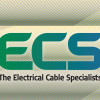Recently, I joined a writer’s bulletin board. I am, of course, a visual designer first, but I write and publish for the enjoyment of discourse. One of my fellow bulletin board writers asked about whether to write a book on his subject of expertise, and asked my opinion about the best way to go about it. Having assisted in the publication of several hundred books during my years at Oxford University Press, and also becoming an author myself, I have this discussion frequently with people who are in the grips of creating their own books, so I decided to summarize my best thoughts for getting it done.
Certainly I encourage you to pursue writing your book. It’s a great thing to do for yourself and for humanity. It’s like striking a blow for civilization. Don’t worry about getting started, I believe you will find your knowledge of subject makes the process easier as you get into it.
First, let’s begin with Winston Churchill’s famous admonition: “No one but a fool ever wrote, except for money.” There are are perhaps other reasons to write, but let’s face it, the main reason is to provide value, and get paid for that value.
Two things that I learned about book publishing through long experience, especially as it relates to publishing for professional services, both have to do with how to invest your time in the project:
A) Do the up front work of getting a publisher.
Being a book author is a big investment of time, even beyond the writing. There are two main models:
- Self publish. The better margins of self publishing look seductive- but look carefully, you have to invest up front time —and some front money—on promotion, distribution, publicity, fulfillment, payments, returns, shipping cartons. Some of these you can outsource, but everything has a cost attached. And, you have all those costs before you get an answer to the most important question: “Will anyone buy this book?”
- Seek a commercial publishing contract. You still have an investment of time, but it’s a much better leverage. In this scenario, you do the up front legwork of getting a contract. Below I outline the method. The huge advantage is that you self educate on the market potential of your book, and you have a chance to modify and tweak it, before you invest all the time of writing and the money of bringing the book to market.
But even if the money were better in self-publishing, there is a still stronger reason to seek a publisher: credibility. A commercial publisher brings an editorial eye, experience, and also their imprimatur, which carries a lot of weight. The fact that an established publisher decided to put their name—and risk their working capital—on your ideas means readers, reviewers, and peers will be more likely to take your book seriously. Yes, you will give up some control over your project by working with an editor. Consider that a privilege; they generally have a lot of experience with what works.
B) Invest your time in the right places:
You don’t have to write the whole manuscript to get a commercial publisher. When I worked in book publishing, the editors I worked with received upwards of thirty unsolicited manuscripts each day! They can’t read them all. What you need is a good book proposal, one that is persuasive and well written. To answer your question about agents: for a technical book such as yours (and mine) I don’t recommend you try to get an agent; work direct. Now for fiction, or for coffee table books, especially if the subject highly marketable with possible film rights, an agent may be a better way to go.
Quick overview on book proposals:
There are whole books and innumerable webinars on how to write a book proposal; probably worth picking one and reading it if you decide to go forward. But here’s a high speed flyover of the main elements that will give you the highest return on your investment of time.
1) Survey: Do a survey of the existing books on your subject, to get an idea of what has already been covered.
You will need to explain to your publisher how your book is different, and what need it fulfills.
This also serves the purpose of surveying which publishers are active in your subject area, and hence which editors are likely to recognize the value of your approach to the topic. Reviewing the top 15 books is enough, more if it is a really big topic. Note their Amazon sales ranking as you look them up. At a minimum, survey the content; where they are close to your topic, do the heavy lifting and read the book.
2) Audience: Decide who benefits from your content enough to want to pay for it. Is your audience is: students? working professionals? Specialized customers? If you can make a brief statement of audience (even a few good sentences) and estimate the size of the audience, you will be ahead of most authors, who tend not to think about this. Publishers, of course care about it tremendously! A carefully detailed customer profile, market size, and especially a brief on how you are qualified to reach this audience, is very persuasive to publishers.
3) Outline. Write a fast content outline. not too detailed. 2-3 pages at the most. Force yourself to be brief, yet still cover the topic you are defining for yourself. It will inevitably change as you get into it; this isn’t set in stone. The best example I know is the outline Ben Franklin wrote to create his Autobiography. It’s included with most editions of this excellent book.
4) Author Bio: Write a brief (2-3 paragraphs max) bio, like from LinkedIn, but hitting the elements that give you credentials to write on your topic. Better still, get someone else to write your bio—writing a good one about yourself is devilishly difficult. What a publisher wants to know is- does this prospective author have a tribe, people who follow him/her already, visibility in their knowledge community, are they able to speak and interview on their topic. (publishers are all pressed for money—if they think that your name and visibility can make the first wave of sales for the, they are much more likely to dive in.
5) Prove you can write: Write a sample chapter. Doesn’t need to be long, the one that worked for me was scarcely 5 pages. A good editor can tell from a small sample if you can express your ideas clearly, and if you know your stuff. And all of them are so pressed for time, they won’t want to read any more than that anyway.
6) Visuals Rock. If you have diagrams, photographs, drawings, etc that are visual, definitely include some of those in the sample chapter. It would be worth it to pay someone to help you make the visuals look very professional. That will elevate your proposal right away.
With those 5 (6 if you count visual) elements, and a knowledge of which publishers are your targets, you can get an idea if anyone will publish your idea.
Rejection and Revision So, worst case, you get a slew of rejections. That’s really a great learning opportunity—they haven’t rejected your whole book, only your proposal. You then can contact the editors and find out their objections. Some won’t respond, of course. But one or two might. If you can get one of your rejecting editors to give you some coaching on what could be better, you may decide to rewrite your proposal and resubmit. How much better it is to have this feedback before you have invested countless hours in creating a complete manuscript!! And, an editor who will help you with content and proposal revision may be able to publish your revised version, or help you identify one who will.
Many authors have to face the decision, if they do not get any acceptable offers, to go ahead and write their book anyway. Many have persevered and come out winners. Some have not. The important thing is to use the publishing industry resources to help you shape your work so that it benefits as many potential readers as possible, and so it makes the best use of your time and expertise.




